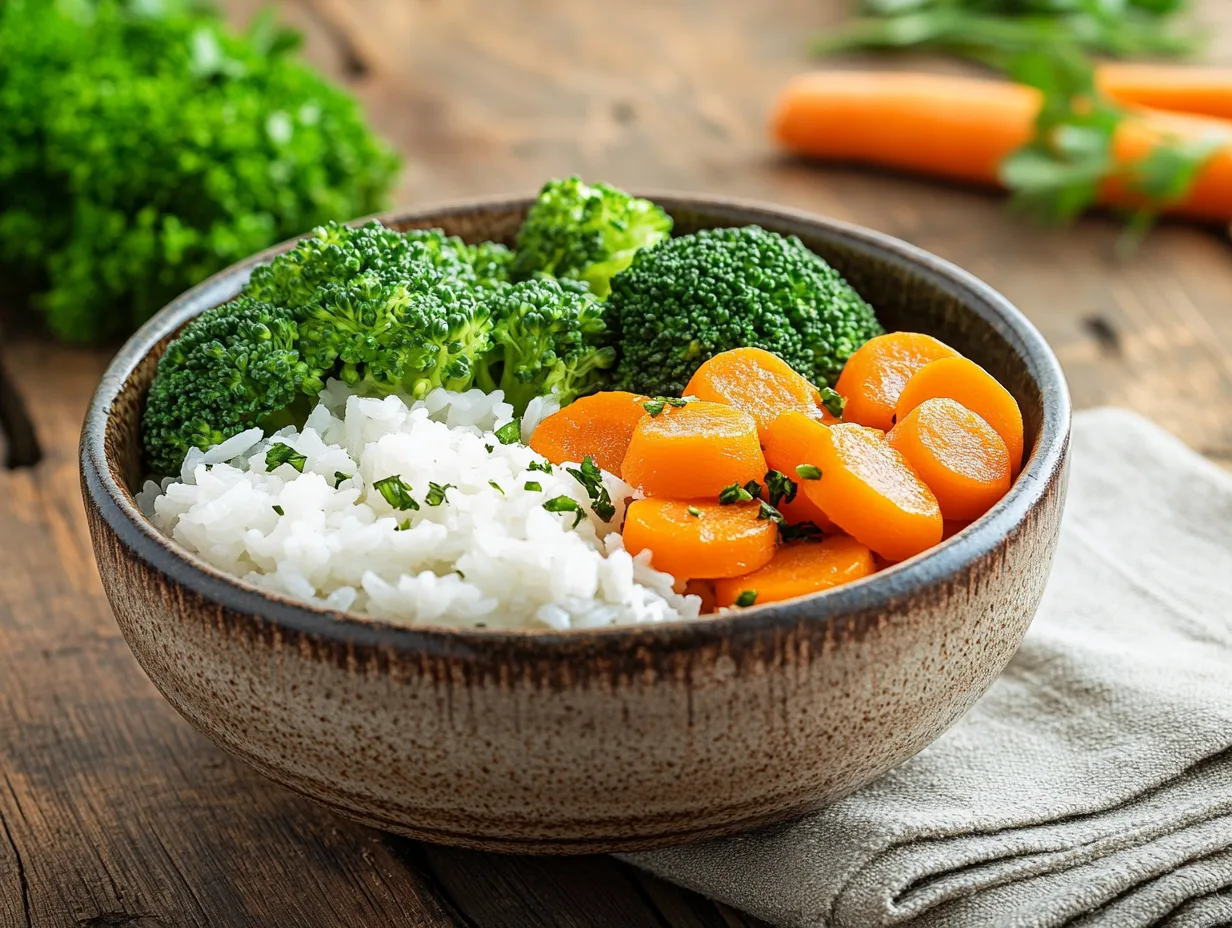How to Find the Right Balance for Your Gut
Managing diverticulitis and fiber effectively is crucial for maintaining a healthy digestive system and preventing painful flare-ups. Diverticulitis, characterized by the inflammation or infection of small pouches (diverticula) in the colon, can significantly disrupt daily life through abdominal pain, fever, and changes in bowel habits. One of the most important dietary factors in managing diverticulitis is fiber intake. However, finding the right balance of fiber is essential to avoid exacerbating symptoms while promoting gut health. This comprehensive guide explores the relationship between diverticulitis and fiber, offering practical tips and evidence-based strategies to help you achieve optimal digestive wellness.
Understanding Diverticulitis and Fiber Balance
What is Diverticulitis?
Diverticulitis occurs when diverticula—small, bulging pouches that form in the lining of the digestive system—become inflamed or infected. These pouches are more common in the colon and can lead to significant discomfort and complications if not managed properly. According to the Mayo Clinic, diverticulitis is more prevalent in individuals over the age of 40, but it can affect people of all ages.
The Role of Fiber in Digestive Health
Fiber is a type of carbohydrate that the body cannot digest. It plays a vital role in maintaining digestive health by adding bulk to stool, which helps it pass more easily through the colon. There are two main types of fiber:
- Soluble Fiber: Dissolves in water to form a gel-like substance. It can help lower blood cholesterol and glucose levels. Sources include oats, peas, beans, apples, and citrus fruits.
- Insoluble Fiber: Does not dissolve in water and helps add bulk to stool, aiding in faster movement through the digestive system. Sources include whole grains, nuts, beans, and vegetables like cauliflower and potatoes.
Balancing these two types of fiber is key to managing diverticulitis effectively.
How Fiber Affects Diverticulitis
Benefits of Adequate Fiber Intake
- Prevents Constipation: Fiber softens stool and increases its bulk, making it easier to pass and reducing the risk of constipation, a major contributor to diverticulitis flare-ups.
- Reduces Colon Pressure: By promoting regular bowel movements, fiber decreases pressure within the colon, which can prevent the formation and irritation of diverticula.
- Promotes Gut Health: Soluble fiber acts as a prebiotic, feeding beneficial gut bacteria that support a healthy digestive system.
Risks of Excessive or Inadequate Fiber
While fiber is beneficial, both excessive and inadequate intake can pose risks for individuals with diverticulitis:
- Excessive Fiber: Sudden increases in fiber intake can lead to bloating, gas, and abdominal discomfort. It’s important to gradually increase fiber to allow the digestive system to adjust.
- Inadequate Fiber: Low fiber intake can result in hard stools and increased colon pressure, heightening the risk of diverticulitis flare-ups.
Balancing fiber intake is crucial for managing diverticulitis without triggering additional symptoms.
Finding the Right Balance of Fiber
Gradually Increasing Fiber Intake
To avoid gastrointestinal discomfort, increase fiber intake gradually:
- Start Slowly: Begin by adding a small amount of fiber-rich foods to your diet each day.
- Monitor Symptoms: Pay attention to how your body responds to increased fiber and adjust accordingly.
- Stay Hydrated: Drink plenty of water to help fiber move smoothly through your digestive system.
Incorporating Both Soluble and Insoluble Fiber
A balanced diet includes both types of fiber to support different aspects of digestive health:
- Soluble Fiber: Incorporate foods like oats, apples, and legumes to help lower cholesterol and stabilize blood sugar levels.
- Insoluble Fiber: Add whole grains, nuts, and vegetables to increase stool bulk and promote regular bowel movements.
Consulting a Dietitian
Working with a registered dietitian can help tailor your fiber intake to your specific needs, ensuring you achieve the right balance without overloading your digestive system. A dietitian can provide personalized meal plans and recommend appropriate fiber supplements if necessary.
Best High-Fiber Foods for Diverticulitis Management
Whole Grains
Whole grains are an excellent source of insoluble fiber, which helps add bulk to stool and promotes regular bowel movements.
- Brown Rice: A versatile side dish that pairs well with a variety of proteins and vegetables.
- Oats: Perfect for breakfast, providing a hearty and fiber-rich start to your day.
- Whole-Wheat Bread: A healthier alternative to white bread, ideal for sandwiches and toast.
Fruits and Vegetables
Fruits and vegetables provide both soluble and insoluble fiber, along with essential vitamins and minerals.
- Apples: With skin on, apples are a great source of insoluble fiber.
- Berries: High in antioxidants and fiber, making them an excellent addition to smoothies and cereals.
- Broccoli: Packed with fiber and nutrients, broccoli can be steamed, roasted, or added to stir-fries.
Legumes
Legumes are rich in both soluble and insoluble fiber, making them a powerhouse for digestive health.
- Lentils: Versatile and easy to incorporate into soups, stews, and salads.
- Chickpeas: Great for making hummus or adding to salads for extra fiber.
- Black Beans: Perfect for adding to tacos, burritos, and salads.
Nuts and Seeds
Nuts and seeds provide healthy fats and fiber, contributing to overall gut health.
- Almonds: A satisfying snack that can help curb hunger and provide a fiber boost.
- Chia Seeds: High in soluble fiber, perfect for adding to smoothies and yogurt.
- Flaxseeds: Can be ground and added to cereals or baked goods for added fiber.
Preparing a High-Fiber Diet Safely
Cooking Methods to Preserve Fiber
Proper cooking techniques can help retain the fiber content in your meals:
- Steaming Vegetables: Helps maintain their fiber content while making them easier to digest.
- Boiling Legumes: Ensures they are fully cooked and their fiber is accessible for digestion.
- Baking Whole Grains: Retains the fiber and makes whole grains more palatable.
Avoiding Common Pitfalls
Be mindful of common mistakes when increasing fiber intake:
- Sudden Increase: Rapidly increasing fiber can cause bloating and gas. Gradual changes are essential.
- Insufficient Hydration: Fiber needs water to function effectively. Without adequate hydration, fiber can lead to constipation.
- Ignoring Body Signals: Listen to your body and adjust fiber intake if you experience discomfort.
Using Fiber Supplements
If dietary changes are insufficient, fiber supplements can help bridge the gap:
- Psyllium Husk: A soluble fiber supplement that can aid in regulating bowel movements.
- Methylcellulose: Another soluble fiber option that is less likely to cause gas.
- Inulin: A prebiotic fiber that supports beneficial gut bacteria.
Always consult with a healthcare provider before starting any fiber supplements to ensure they are appropriate for your specific health needs.
Lifestyle Tips to Support Fiber Intake
Staying Active
Regular physical activity complements a high-fiber diet by promoting efficient digestion and preventing constipation.
- Walking: Simple and effective, walking helps stimulate intestinal activity.
- Yoga: Enhances flexibility and encourages gentle movement of the digestive tract.
- Swimming: Provides a full-body workout without putting strain on the abdomen.
Managing Stress
Stress can impact digestive health by increasing inflammation and altering gut motility. Effective stress management techniques include:
- Meditation: Regular practice can calm the mind and reduce stress hormones.
- Deep Breathing Exercises: Help relax the body and improve digestion.
- Progressive Muscle Relaxation: Reduces physical tension, promoting overall well-being.
Prioritizing Sleep
Adequate sleep supports overall health and aids in maintaining regular bowel movements. Aim for 7-9 hours of quality sleep each night by:
- Establishing a Routine: Go to bed and wake up at the same time each day.
- Creating a Restful Environment: Keep your bedroom dark, cool, and quiet.
- Limiting Screen Time: Reduce exposure to screens before bedtime to enhance melatonin production.
Monitoring and Adjusting Your Fiber Intake
Keeping a Food Diary
Tracking your food intake and symptoms can help identify the optimal fiber level for your digestive health:
- Record Daily Meals: Note the fiber content and types of foods consumed.
- Track Symptoms: Document any digestive discomfort, pain, or changes in bowel habits.
- Analyze Patterns: Look for correlations between fiber intake and symptom relief or aggravation.
Consulting Healthcare Professionals
Regular consultations with healthcare providers can ensure that your fiber intake is appropriate for your condition:
- Dietitians: Provide personalized dietary plans to optimize fiber intake.
- Gastroenterologists: Offer medical insights into how fiber affects your diverticulitis.
- Primary Care Physicians: Monitor overall health and address any related concerns.
Adjusting Fiber Based on Flare-Ups
During diverticulitis flare-ups, your fiber needs may change. Follow medical advice to adjust your fiber intake accordingly:
- Low-Fiber Diet: Temporarily reduce fiber intake to allow the colon to heal.
- Gradual Reintroduction: Slowly increase fiber once symptoms improve to maintain digestive health.
External Resources and Further Reading
Authoritative Health Sources
- Mayo Clinic on Diverticulitis
- Cleveland Clinic on Fiber and Diverticulitis
- Harvard Health on Fiber Intake
Recommended Literature
- Diverticulitis Cookbook by Megan Rush: A comprehensive guide offering a variety of fiber-rich recipes tailored to support digestive health. Diverticulitis Cookbook by Megan Rush.
Summary of Diverticulitis and Fiber Balance
Achieving the right balance of fiber is pivotal in managing diverticulitis and preventing flare-ups. Here are the key takeaways:
- Incorporate High-Fiber Foods: Focus on a diverse range of whole grains, fruits, vegetables, legumes, nuts, and seeds.
- Gradual Fiber Increase: Slowly introduce fiber into your diet to avoid gastrointestinal discomfort.
- Stay Hydrated: Adequate water intake is essential for fiber to function effectively.
- Balance Soluble and Insoluble Fiber: Ensure a mix of both types to support overall digestive health.
- Regular Physical Activity: Engage in consistent, low-impact exercises to promote efficient digestion.
- Manage Stress: Utilize mindfulness and relaxation techniques to reduce stress-related digestive issues.
- Monitor and Adjust: Keep a food diary and consult healthcare professionals to tailor your fiber intake to your needs.
- Avoid Trigger Foods: Identify and eliminate foods that may irritate your colon and trigger flare-ups.
By integrating these strategies, you can effectively manage your fiber intake, support your digestive health, and minimize the risk of diverticulitis flare-ups, leading to a more comfortable and healthier life.


Leave a Reply